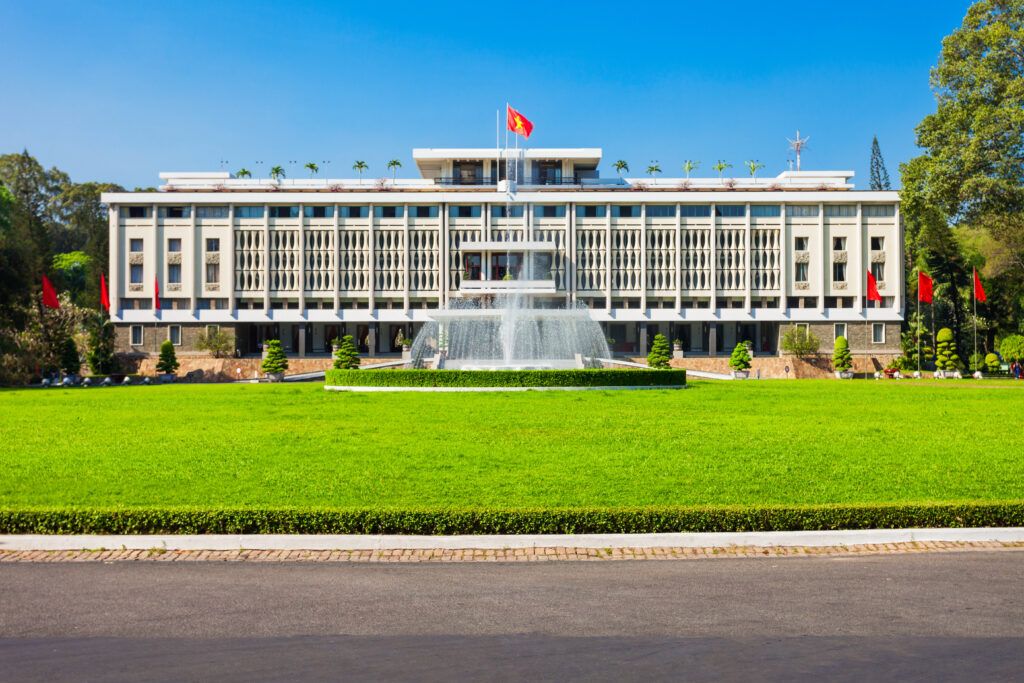
The Reunification Palace, also known as Independence Palace, stands proudly in the heart of Ho Chi Minh City as one of the most iconic landmarks in Vietnam. This historical site serves as a powerful reminder of the country’s turbulent past, particularly the Vietnam War. Most famously, it was at this palace where the Vietnam War effectively ended on April 30, 1975, when a North Vietnamese tank crashed through its gates, marking the fall of Saigon and the reunification of Vietnam.
Today, the Reunification Palace is not just a symbol of the end of the war, but a place where visitors can explore Vietnam’s modern history and culture through its grand architecture, preserved war relics, and lush gardens. Walking through its rooms and corridors, you can almost feel the weight of the political decisions and military strategies that took place here.
Whether you’re a history enthusiast, a curious traveler, or someone interested in understanding the impact of the Vietnam War, the Reunification Palace offers a fascinating journey into Vietnam’s recent past.
Visiting Information
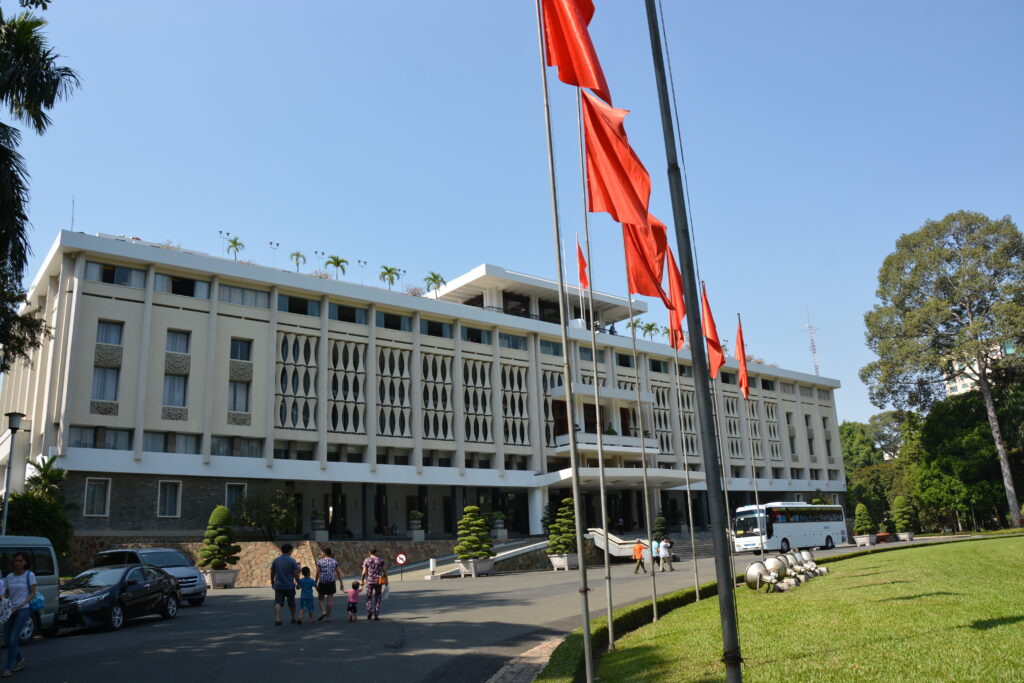
To ensure a smooth visit, here are the essential details for your trip to the Reunification Palace:
- Address: 135 Nam Ky Khoi Nghia Street, Ben Thanh Ward, District 1, Ho Chi Minh City, Vietnam
- Entrance fee: 50,000 VND (approx. 2.2 USD) per person
- Opening hours: Open daily from 8:00 am to 3:30 pm, including weekends and holidays
- Peak hours: The palace tends to be busiest between 9:00 am and 11:00 am, so visiting early or late in the day will help you avoid the crowds.
- Dress code: There is no official dress code, but dressing modestly is recommended, especially out of respect for the historical significance of the site.
Getting There

Reunification Palace is centrally located in District 1, making it easily accessible by various modes of transportation:
- By Foot: If you’re staying within District 1 or nearby, you can easily walk to the Reunification Palace. Walking through the bustling streets of Ho Chi Minh City offers a great way to experience the lively atmosphere and local culture up close.
- Taxi: If you’re staying in the city center, the palace is just a short taxi ride away. Depending on traffic, the ride should take about 10-15 minutes, with a fare ranging between 50,000-100,000 VND (2-4 USD).
- Public Transportation: Several buses stop nearby, and from there, it’s a short walk to the palace. Bus routes, such as those running along Le Duan Street, can get you close to the palace.
- Cycling Option: For a unique experience, consider Ho Chi Minh cycling tour with Jackfruit Adventure, where you can explore the city on two wheels while uncovering historical gems along the way. This eco-friendly option lets you combine exercise with a more intimate look at the streets of Saigon.
History of the Reunification Palace

The history of the Reunification Palace is deeply intertwined with Vietnam’s political landscape, particularly during the 20th century. Originally built as the Norodom Palace by the French in the 19th century, the building was the home of the French governor during the colonial period. Following the French departure from Vietnam, the palace was used as the official residence of Ngo Dinh Diem, the first president of South Vietnam.
In 1962, the original structure was severely damaged by a bombing, and it was later rebuilt as the Independence Palace, designed by prominent architect Ngo Viet Thu. The architecture reflects a blend of modernist design with traditional Vietnamese elements, featuring large open spaces, clean lines, and symbolic motifs.
On April 30, 1975, the iconic image of the North Vietnamese tank crashing through the gates marked the end of the Vietnam War, as well as the fall of the South Vietnamese government. This event, which took place at the Reunification Palace, symbolized the moment of unification between North and South Vietnam, turning the palace into a national monument and a lasting symbol of peace and reunification.
Today, the palace remains much as it was during that momentous day. Visitors can explore the rooms that once hosted high-level meetings, as well as the war command room that was integral to South Vietnam’s military operations.
What to See at the Reunification Palace
The Grounds
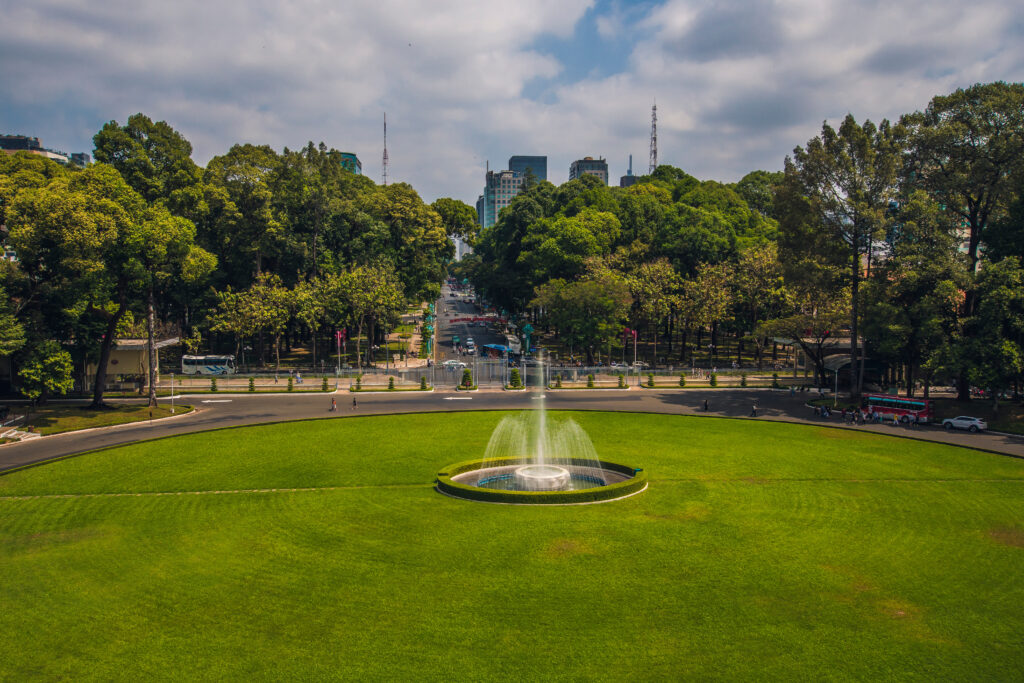
Before even stepping inside, the palace’s vast gardens greet visitors with lush greenery, fountains, and sculptures. The tranquil setting offers a serene contrast to the bustling streets of Ho Chi Minh City, and it’s a great place to take a moment to appreciate the palace’s grandeur before diving into the historical exhibits.
Main Hall
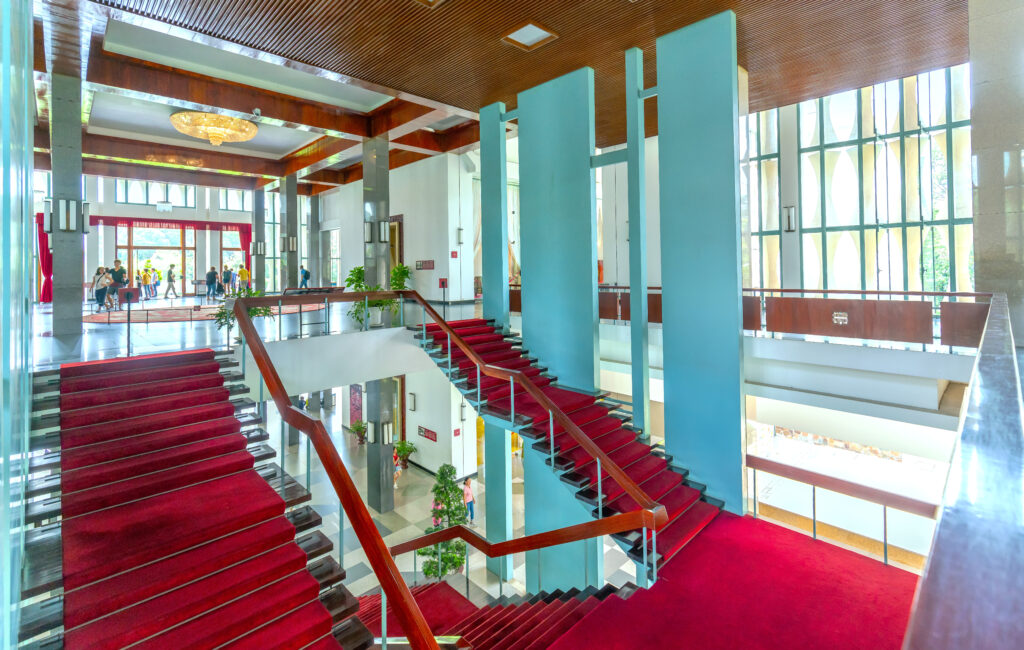
Upon entering the Main Hall, you’re immediately struck by the grandeur of the twin staircases leading to the upper levels. This space was where the President of South Vietnam held official receptions, and it retains its regal atmosphere.
War Command Room
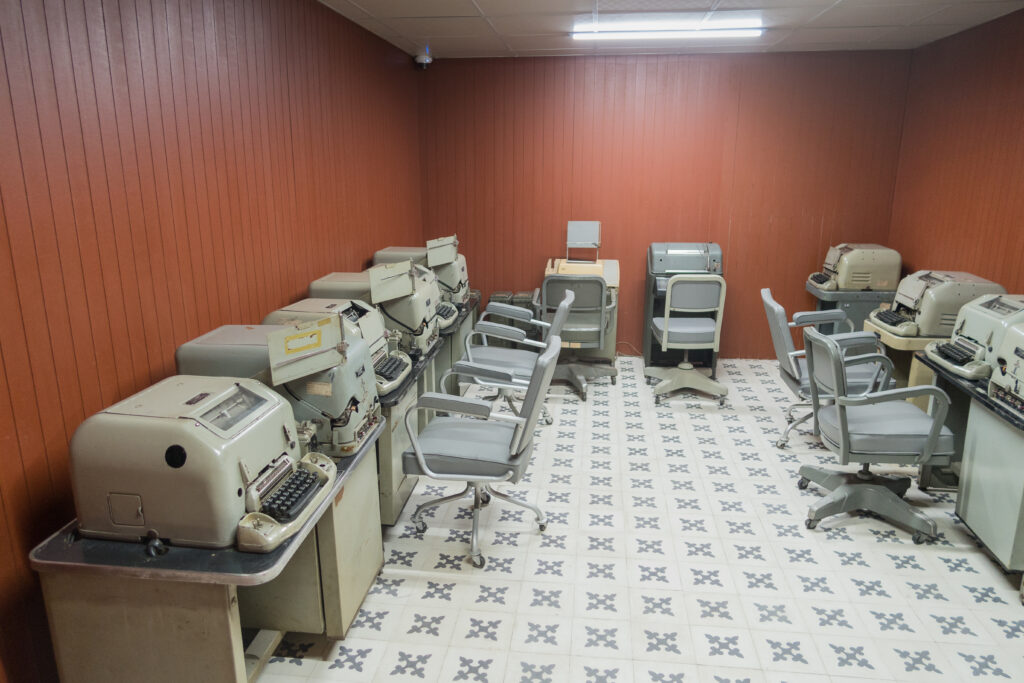
A highlight for history buffs, the War Command Room remains frozen in time, with telephones, plotting boards, and radios still in place. This room was where South Vietnamese military operations were directed, and walking through it provides a tangible connection to the decisions and strategies of the Vietnam War.
Basement and Bunker
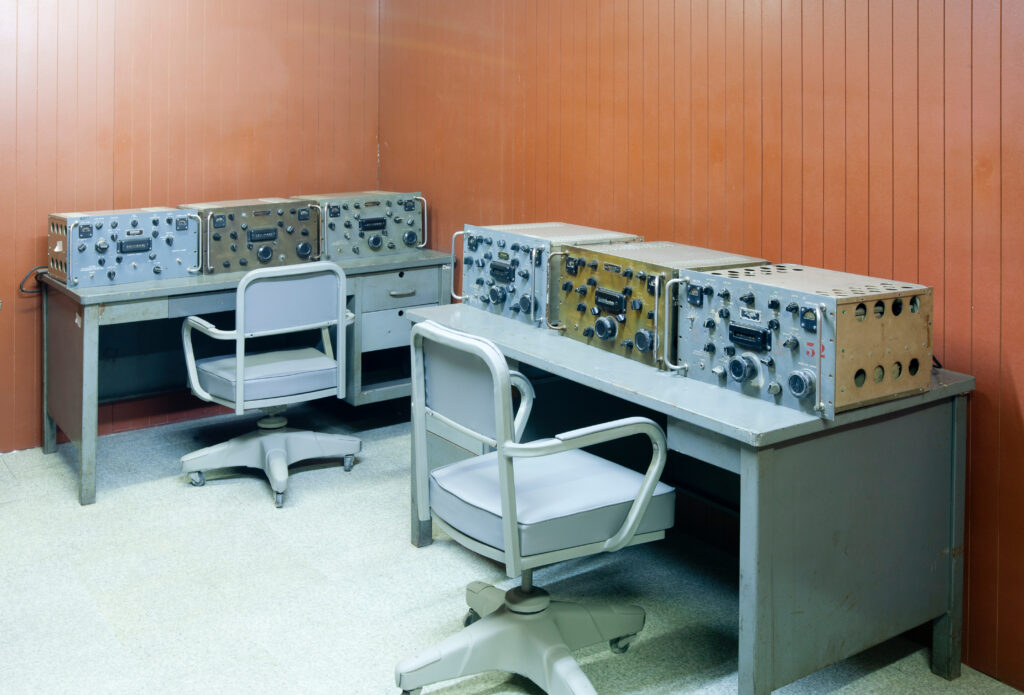
The palace’s basement houses a secretive world of war-time communications. You can see the communication center, which was essential for maintaining contact with foreign nations during the war, along with the private cinema room and a billiard room for the President’s personal use.
The bunker below the palace, a fortified underground space, provided shelter to the President and his staff during air raids and other attacks. It’s a haunting reminder of the dangerous realities of war and how close conflict came to this central hub of South Vietnamese leadership.
Reception Room
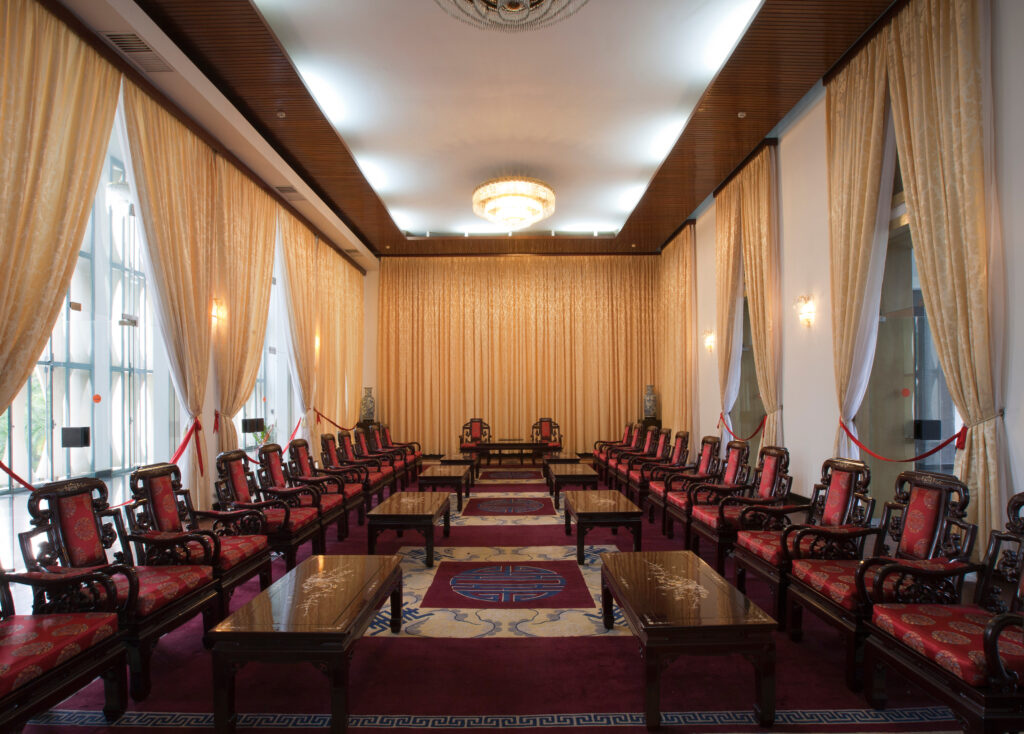
The Reception Room is an elegant space designed for welcoming distinguished guests. It features exquisite artwork, finely crafted furniture, and provides a grand yet inviting atmosphere that reflects the palace’s opulence.
Meeting & Events Room

Located on the second floor, this room was used for official meetings and important diplomatic events. Here, the President hosted foreign dignitaries, signed critical documents, and held significant discussions. The room is adorned with luxurious red velvet furniture and sparkling crystal chandeliers, adding to its grandeur and historical significance
Private Living Quarters
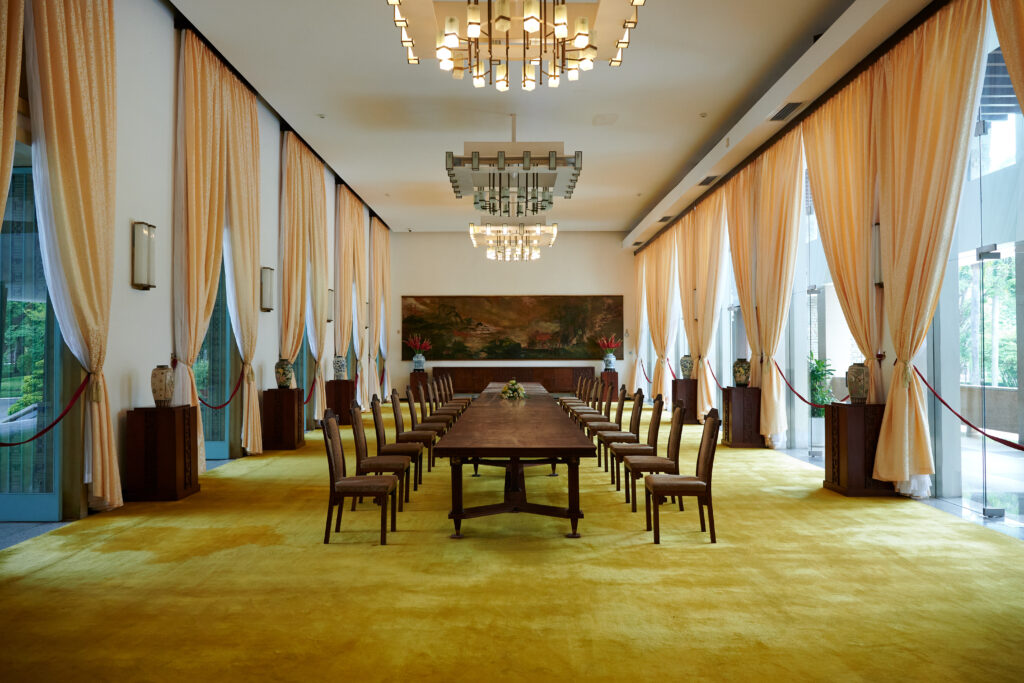
The private living quarters offer insight into the daily life of South Vietnam’s leadership. The President and his family lived in these rooms, which include bedrooms, sitting areas, and personal offices. Walking through these areas, you can glimpse what life was like for those in power during a time of national division.
Rooftop and Helicopter Pad
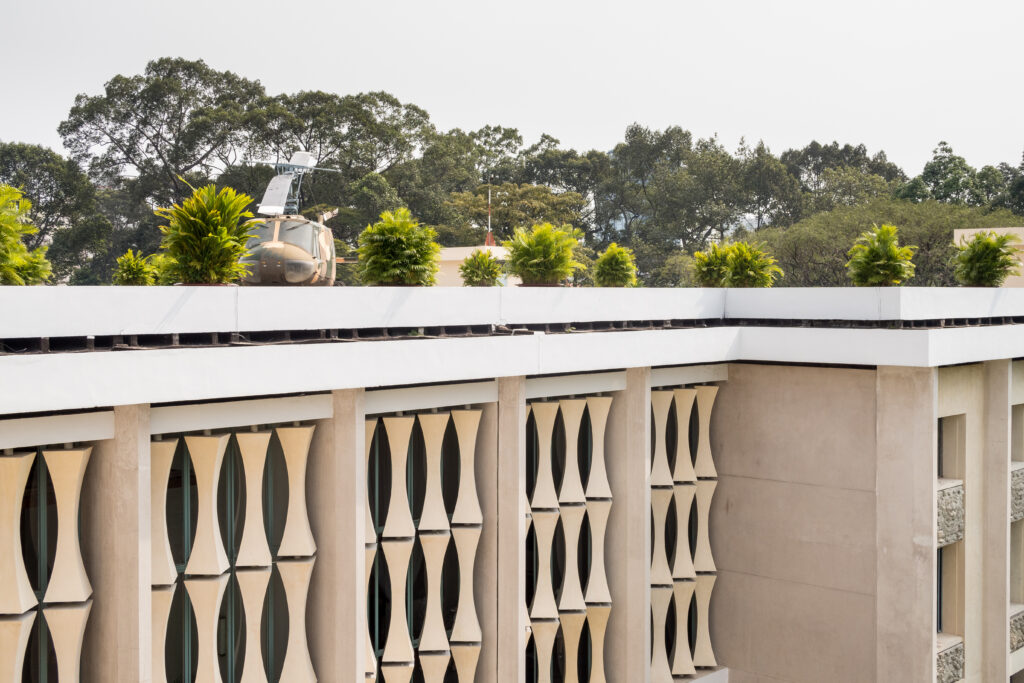
The rooftop of the palace is not only home to a helicopter pad, but it also offers panoramic views of the city below. The rooftop played a crucial role in the famous evacuation of American personnel on April 30, 1975, marking one of the last symbolic moments of the Vietnam War. Today, it’s a popular spot for visitors to reflect on the historical significance of the palace while enjoying stunning views of Ho Chi Minh City.
Museum and Exhibition Rooms
Inside the palace, there’s also a museum that offers more context to the Vietnam War and the role the Reunification Palace played in it. Exhibits showcase historical documents, photographs, and artifacts that give visitors a deeper understanding of the events leading up to the war’s end and the eventual reunification of Vietnam.
Other Vietnam War Sites to Explore
While the Reunification Palace is a major historical site, Ho Chi Minh City is home to several other important locations that offer insight into the Vietnam War. If you’re eager to learn more, here are a few nearby attractions:
- Cu Chi Tunnels: Just outside the city, the Cu Chi Tunnels provide an immersive experience into the life of Viet Cong soldiers who used this extensive underground network during the war. You can explore sections of the tunnels and learn about the complex strategies employed by the Viet Cong.
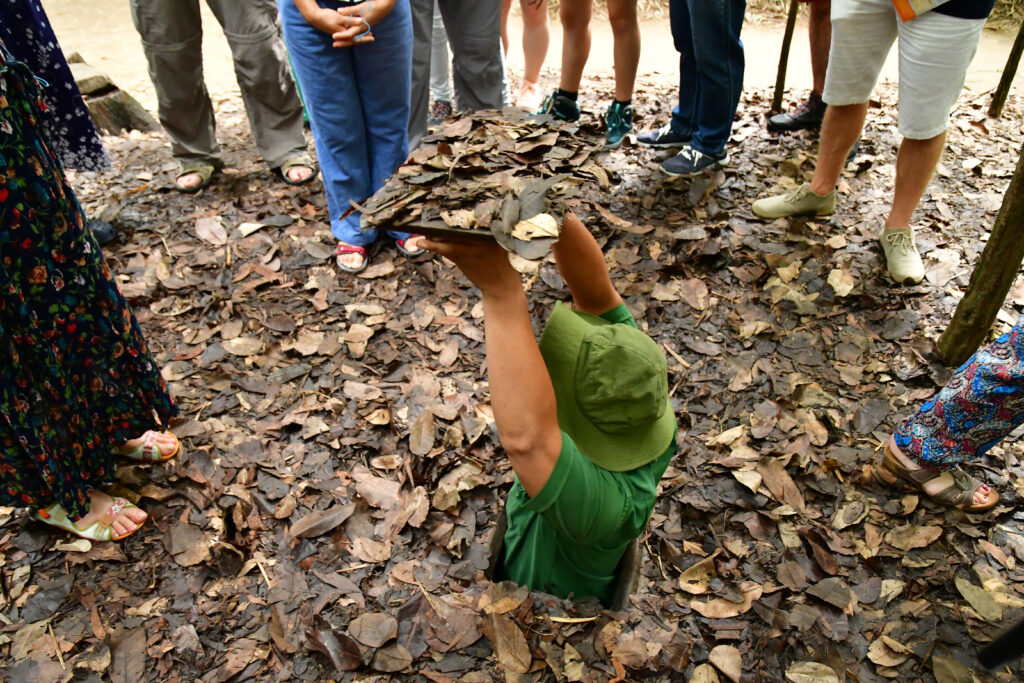
- War Remnants Museum: Only a short walk from the Reunification Palace, the War Remnants Museum offers a powerful and emotional journey through the history of the Vietnam War, with exhibits showcasing the war’s devastating effects on the Vietnamese people.
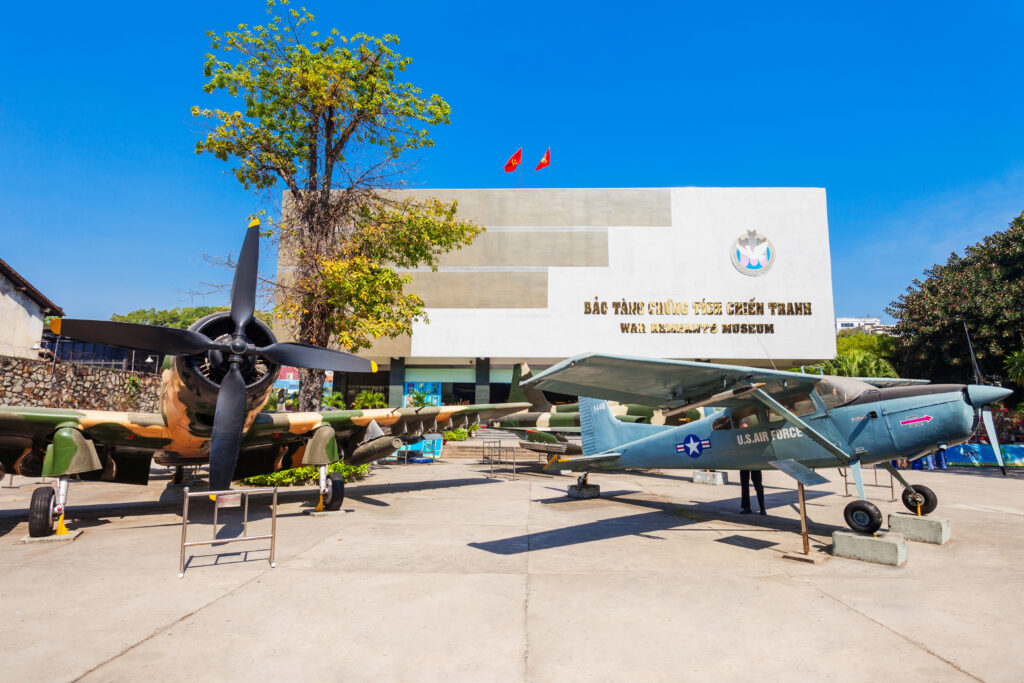
For more suggestions on war-related sites, check out our comprehensive guide on Vietnam War sights in Ho Chi Minh City for a deeper dive into the country’s turbulent history.
Let’s Wrap It Up
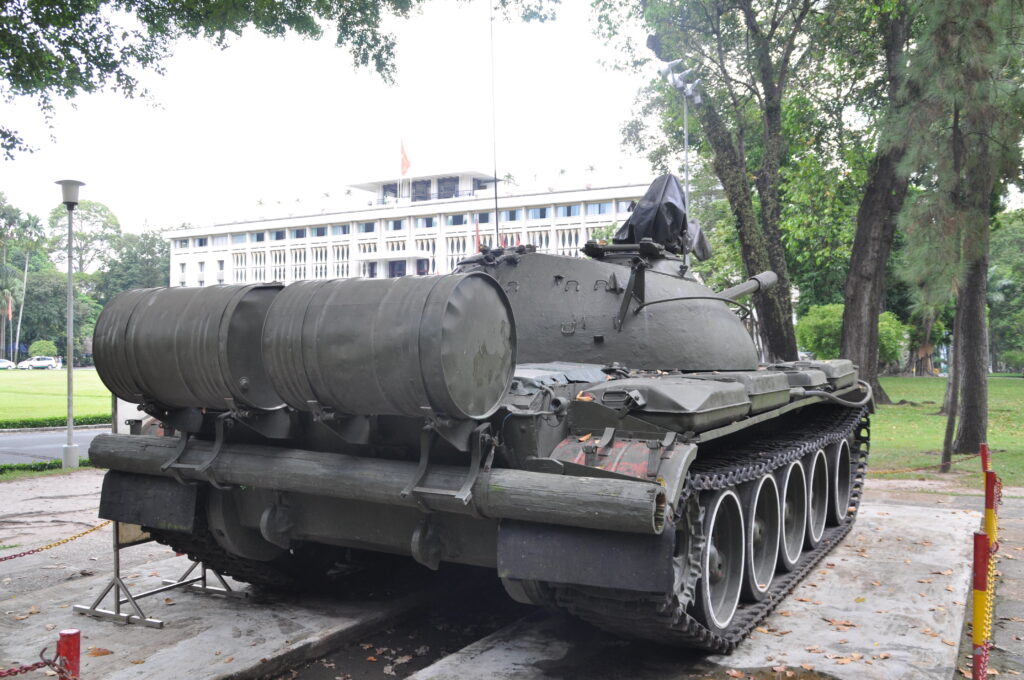
Visiting the Reunification Palace is like stepping into a time capsule that offers a rare glimpse into the heart of Vietnam’s modern history. From its regal reception halls to its hidden bunkers, each room tells a story of political ambition, military strategy, and the eventual reunification of a divided nation.
As you walk through its corridors, imagine the moment in 1975 when the gates were breached, and consider how this singular event shaped the future of Vietnam. The Reunification Palace remains not just a historical building, but a symbol of peace, unity, and the resilience of the Vietnamese people.
And if you’re looking to explore beyond history, take a look at 25 Unusual Things to Do in Ho Chi Minh City, or enjoy the city after dark with 20 Things To Do In Ho Chi Minh City at Night. For those seeking a full cultural immersion, check out 26 Things to Do in Chinatown Ho Chi Minh or plan a romantic getaway with Top 10 Romantic Things to Do in Ho Chi Minh City. Families traveling with little ones can also benefit from our guide on 25 Things to Do with Kids in Ho Chi Minh City.
Ho Chi Minh City Cycling Tour In Ho Chi Minh City (Saigon) – Vietnam

At Jackfruit Adventure, we organize Ho Chi Minh City Cycling Tour and Team Building Ho Chi Minh. With a deep knowledge of Saigon city and local connections, we believe we can give you an awesome bonding time together. Contact us today if you have any requests or questions to prepare a trip for your team to bond in Ho Chi Minh – Vietnam.




